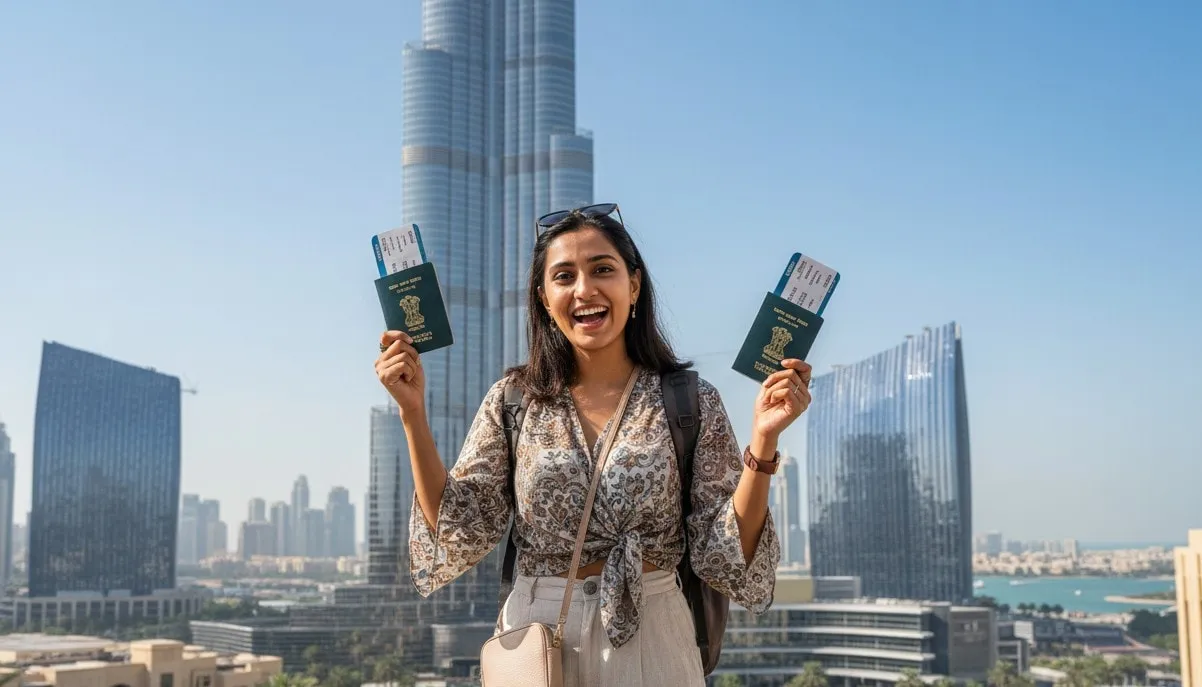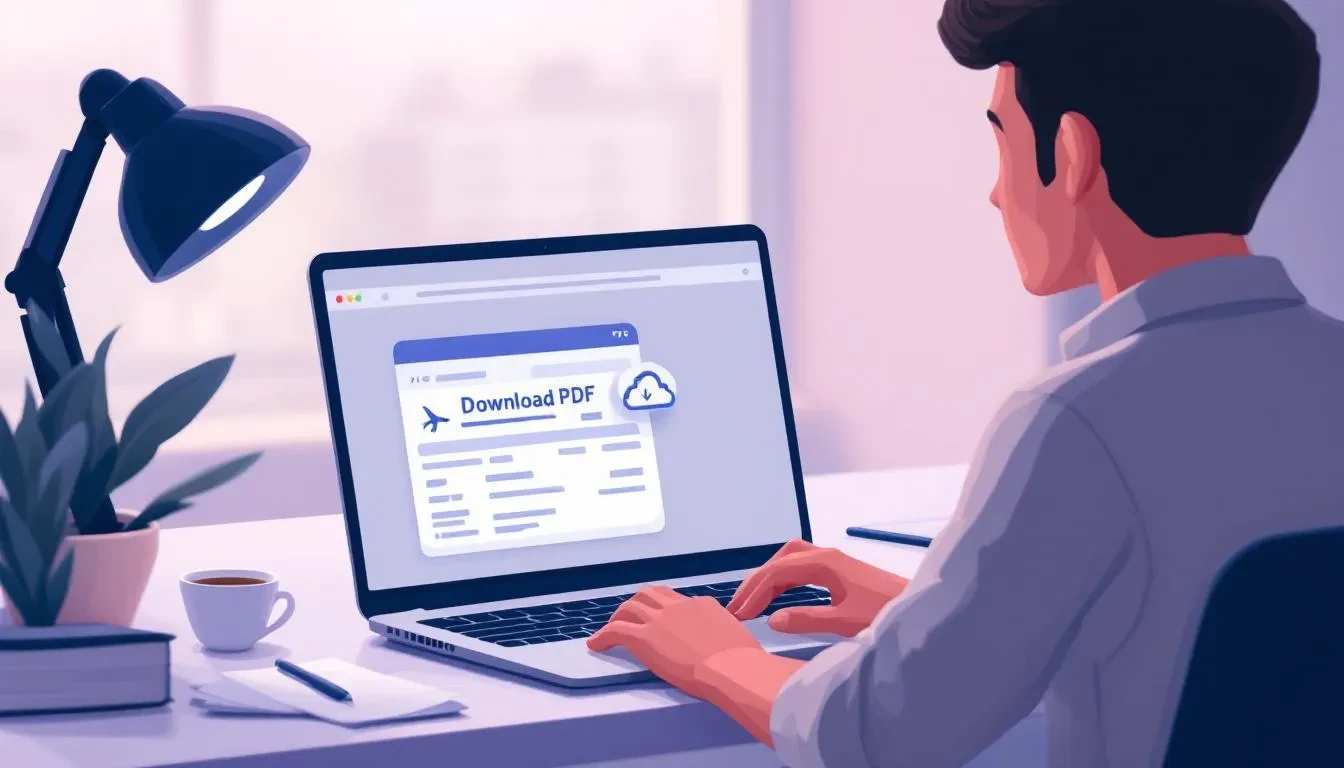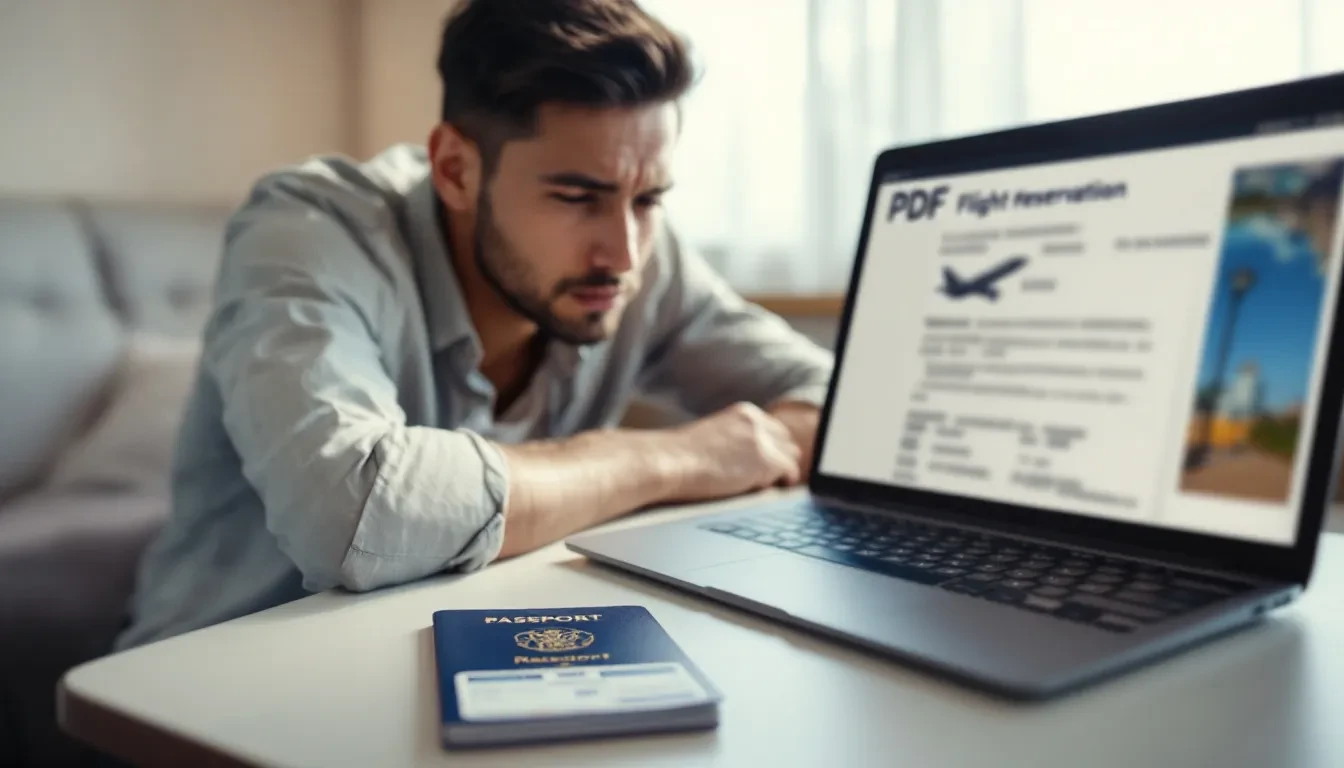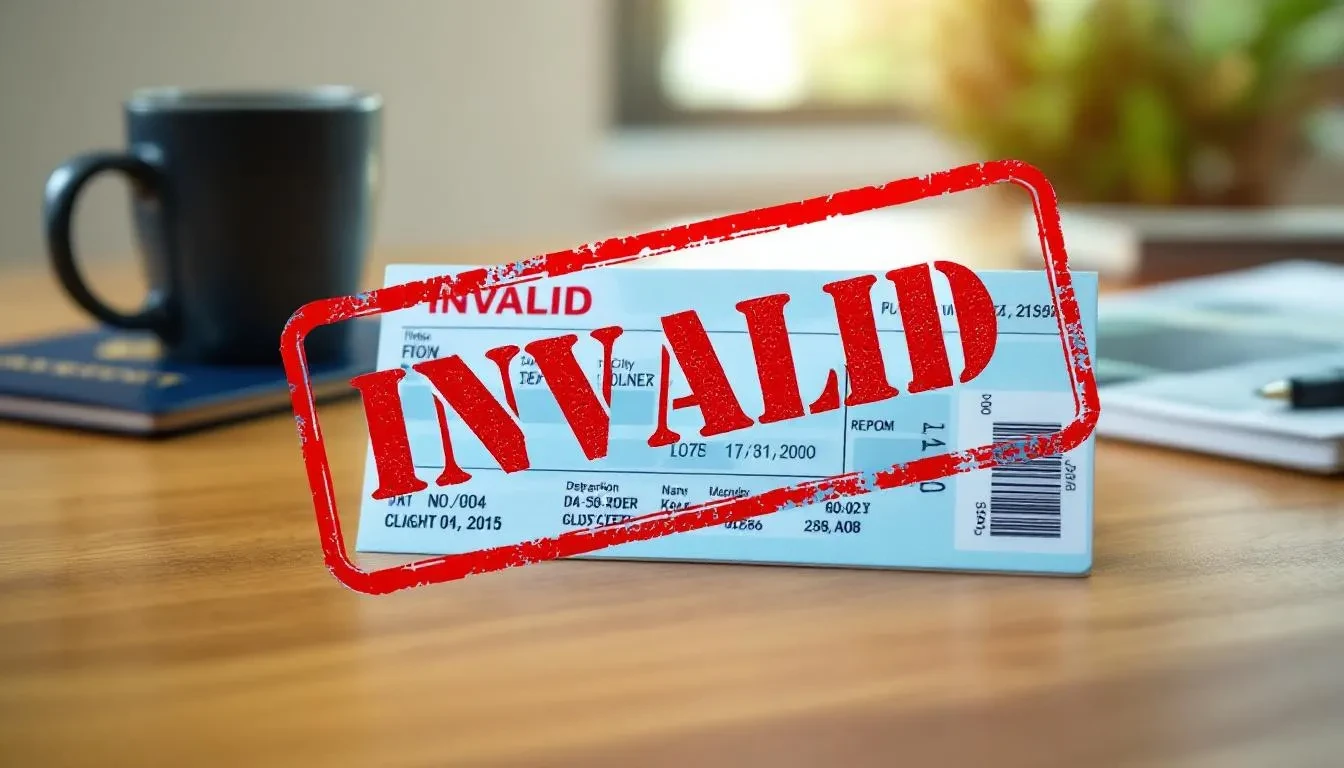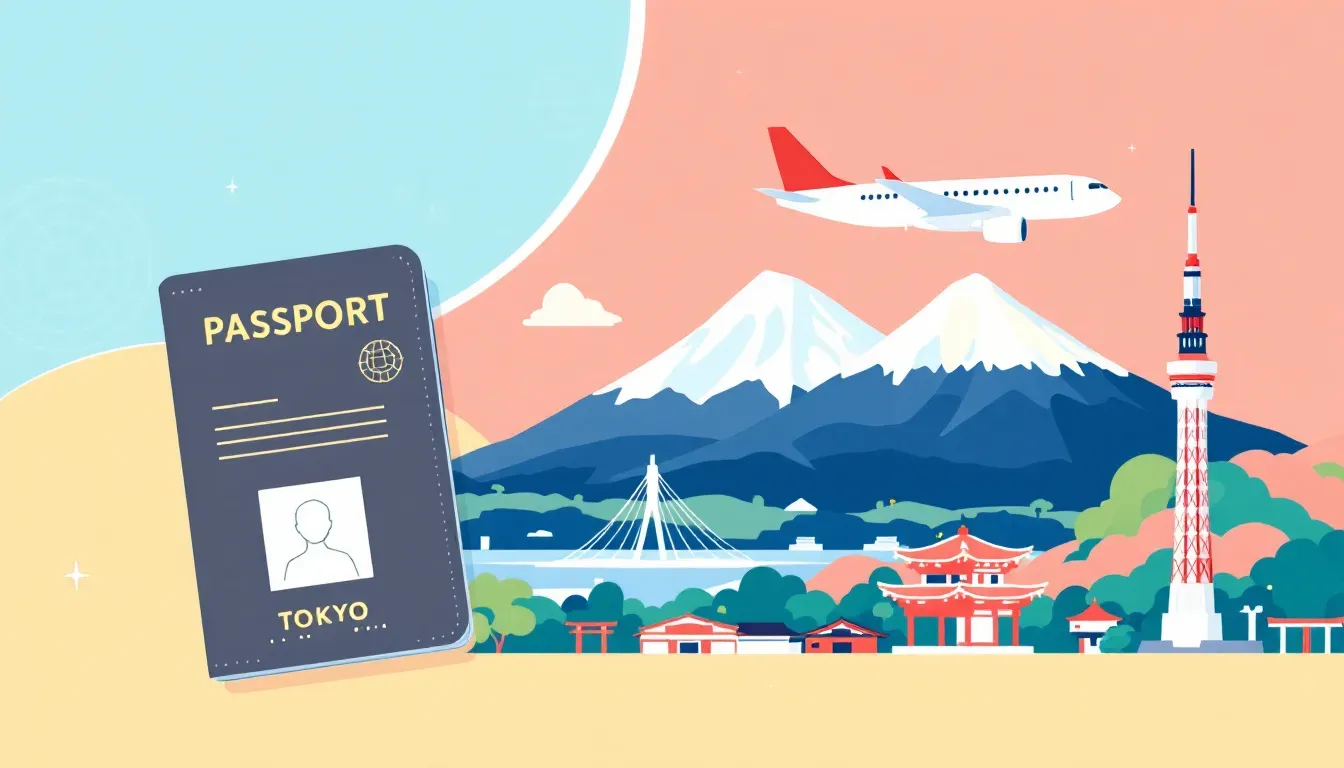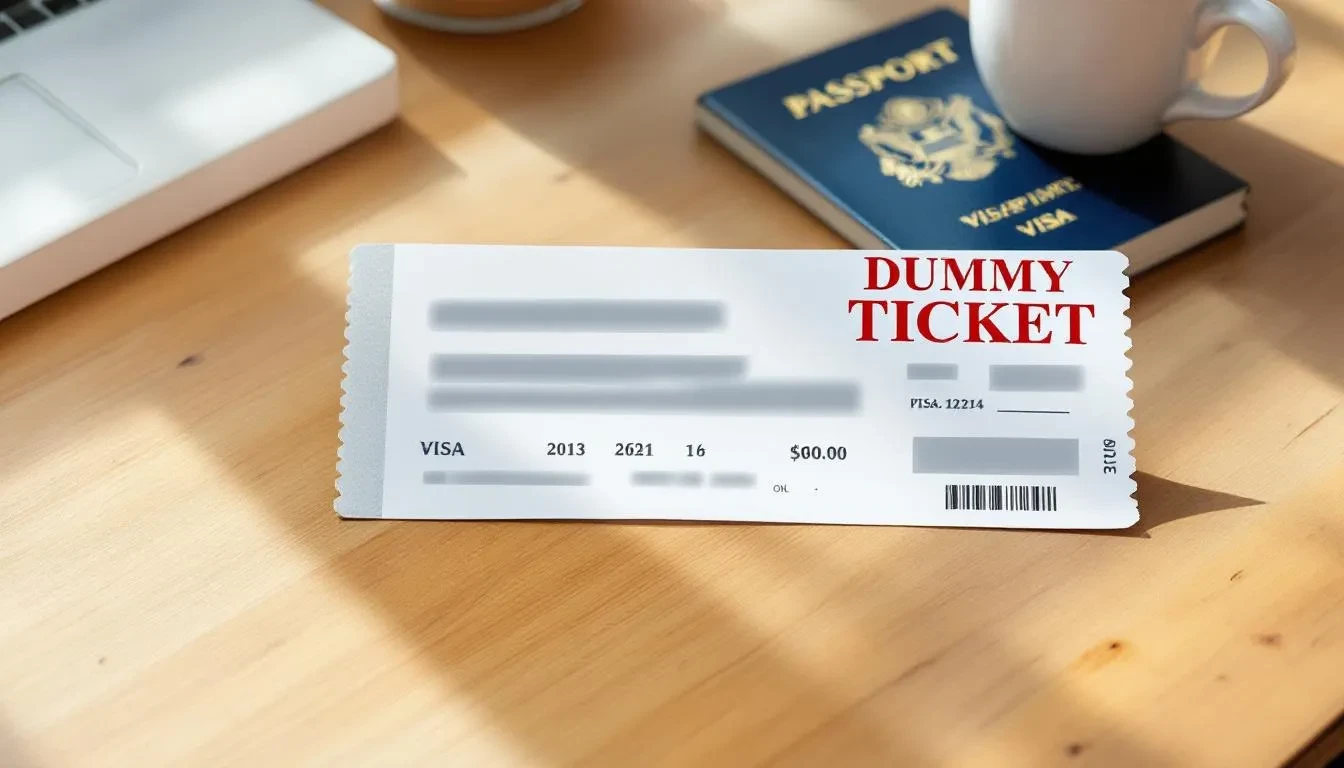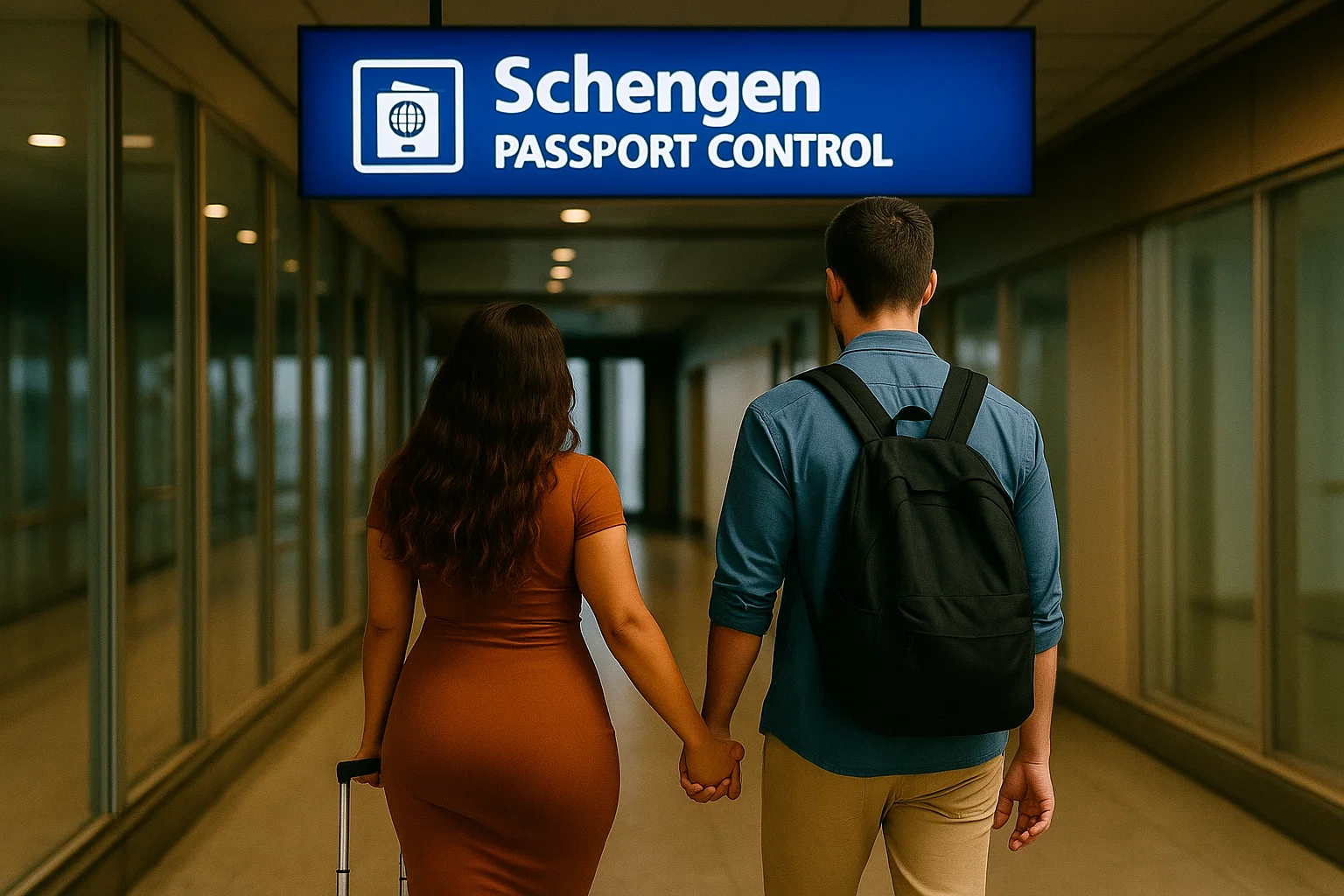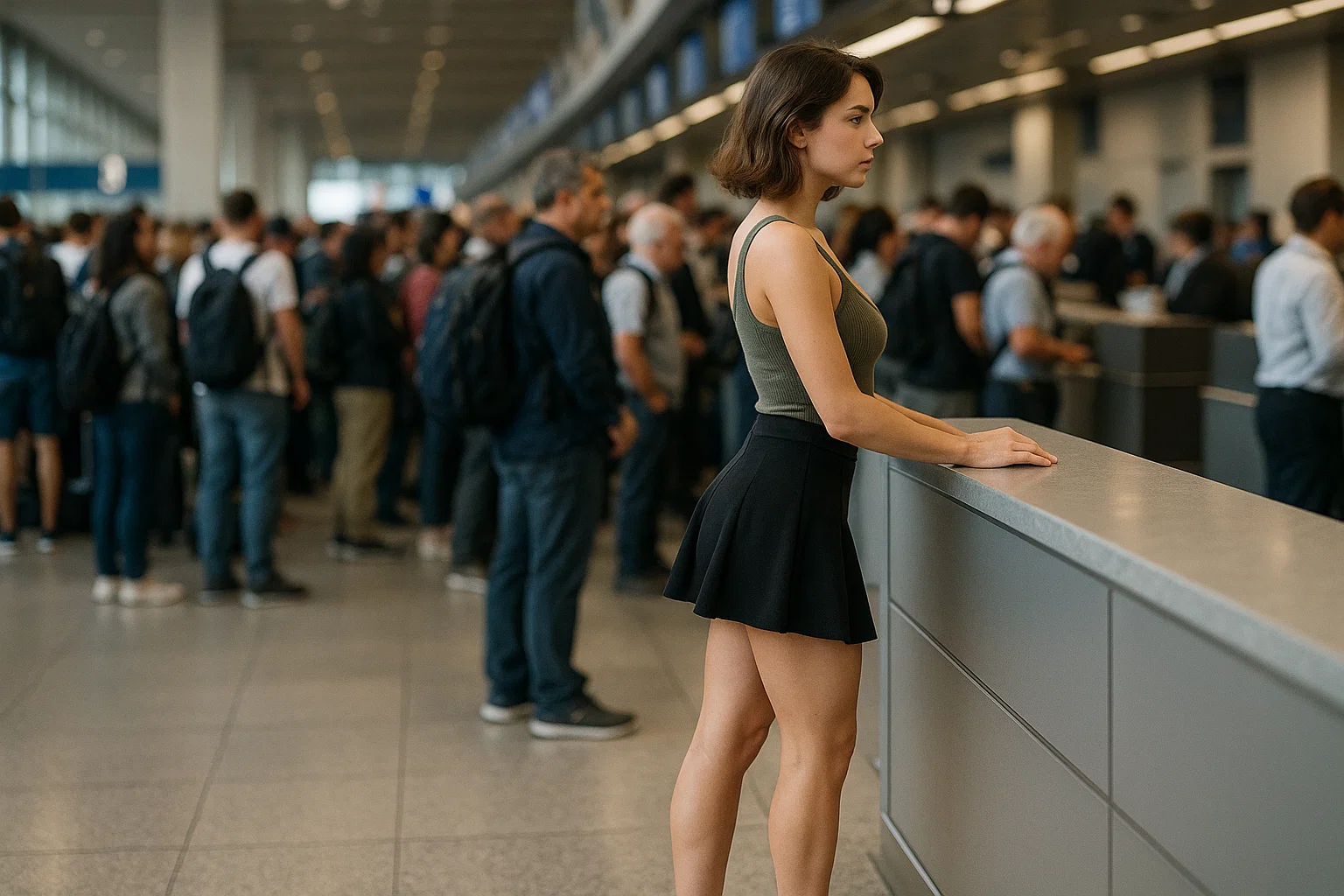Embassy-Approved Dummy Flight Booking for Visa India (2025)
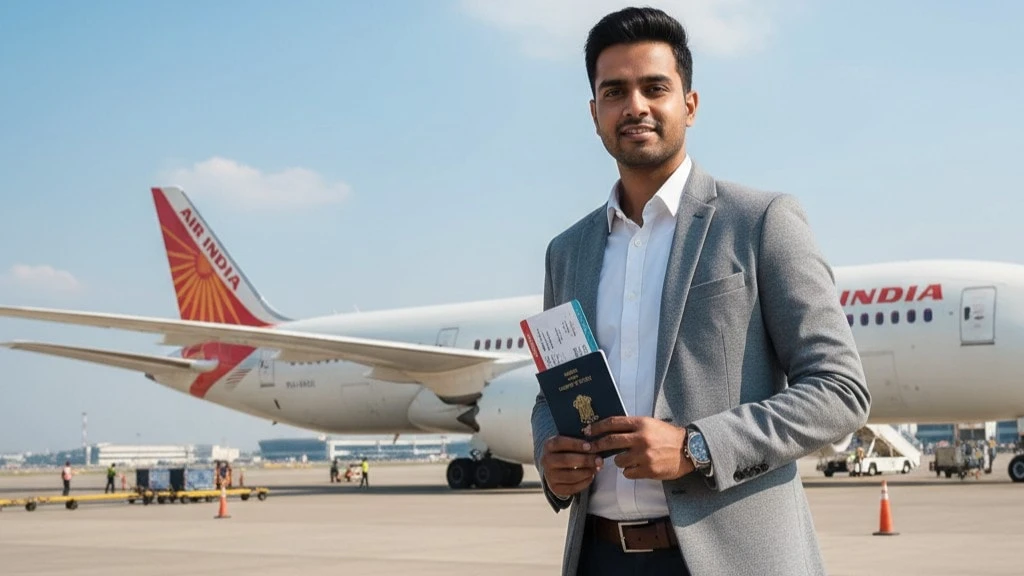
Dummy Ticket for India Visa (2025)
If you’ve ever applied for a visa from India, you know the process can feel like juggling glass balls. One wrong move, and you’re rescheduling appointments or losing money on a ticket you might never use. That’s where a dummy ticket comes in. It’s a safe, embassy-approved way to show your travel intent without paying for a real ticket upfront. Most embassies just want to see your plan, not proof of purchase. For more detailed visa tips, check our blogs or learn about our service on the About Us page.
Here, we’ll walk through everything—how it works, what Indian embassies actually check, and how you can get a verifiable itinerary that fits your story. Whether you’re a student, a first-time traveler, or a family visitor, by the end, you’ll know exactly how to handle dummy ticket like a pro. Ready to complete your visa file?
An embassy-approved dummy flight booking for India visa is a verifiable flight reservation designed to meet Indian embassy and consulate requirements for visa proof of onward or return travel. It includes a genuine Passenger Name Record (PNR) that can be confirmed directly on the airline’s website, proving your travel intent without purchasing an actual ticket. These bookings follow the official embassy format—containing applicant name, flight number, dates, and destination—and are accepted across Indian missions worldwide. Services like DummyFlights.com generate instant, PNR-verified reservations that comply with embassy standards and are ready for immediate visa submission.
Last updated: October 2025 — verified with latest Indian visa and consular submission guidelines.
Table of Contents
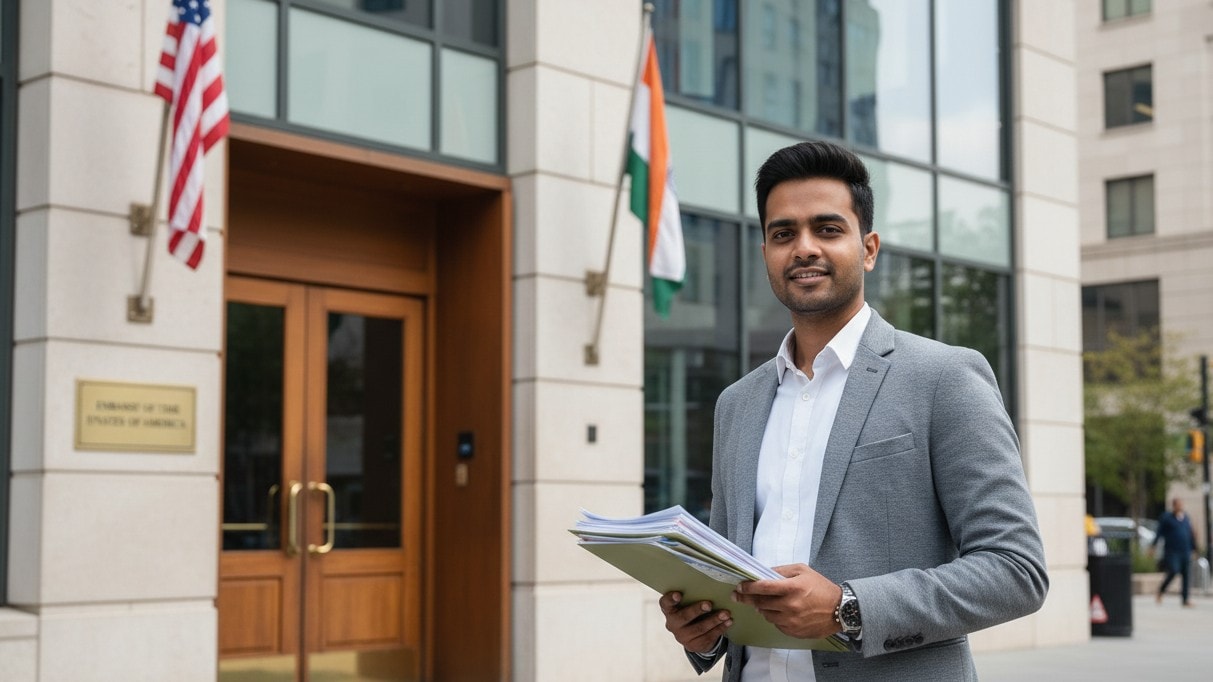
Dummy Flight Bookings For Visa Applications in India
If you’ve ever stared at a visa checklist wondering what on earth “confirmed flight itinerary” means, you’re not alone. Every week, thousands of Indian travelers—students, families, freelancers, and honeymooners—face the same confusion. The term “dummy flight booking” sounds shady, but it’s actually a legitimate part of the visa process when done right.
Let’s cut through the jargon and get crystal clear on what it really means, how embassies in India view it, and what separates a trusted itinerary from a risky one. Avoid last-minute stress—start your dummy ticket booking now and get a verified itinerary for your visa application today.
When Words Get Twisted: What Embassies Mean vs. What Travelers Think
Most confusion starts with terminology. Embassies use terms like flight reservation, itinerary confirmation, or travel plan. But travel agents and online sellers often advertise it as a dummy ticket.
Here’s the truth:
- A dummy flight booking is not a fake ticket. It’s a temporary, real reservation created in the airline system with a unique PNR (Passenger Name Record).
- It proves your intent to travel without requiring you to pay for the full ticket upfront.
- It’s valid for a limited period—usually 24 to 72 hours—before it auto-expires if not paid.
Now, compare that with:
- Issued Ticket: Paid, confirmed, and final. You’ve been charged, and the airline owes you a seat.
- E-ticket: The digital proof of a paid ticket, complete with ticket number.
- Refundable Fare: A real purchase you can cancel for a refund, though often with fees.
When you present a dummy booking for your visa file, you’re essentially saying: “Here’s my proposed route. I’ll confirm it once my visa is approved.” And that’s exactly what most embassies want—evidence of planning, not prepayment.
Why Embassies Insist On Seeing Your Flight Plan
So why do embassies ask for this in the first place? After all, they know you’ll only finalize your trip once you have the visa. The answer lies in credibility and intent.
A realistic flight plan helps officers quickly assess:
- The dates and duration of your intended stay.
- Whether your entry and exit points align with your purpose.
- If your travel route makes sense geographically and financially.
- How your itinerary fits with your accommodation, work, or study documents.
Embassies in India, especially those handling Schengen, UK, or Canada applications, use the flight plan to judge whether your story holds up. For example:
- Applying for a 10-day trip but showing a 45-day flight plan looks inconsistent.
- Mentioning Paris in your cover letter but flying to Madrid first may need explanation.
- Applying as a student but showing a return ticket two weeks later may signal confusion.
In short, your dummy ticket isn’t just a formality—it’s a snapshot of your travel story, and it needs to make sense.
Behind The Counters: How Indian Visa Centers Actually Check It
If you’re applying from India, chances are you’ll submit your application through VFS Global, BLS, or other consular partners. These centers don’t decide your visa—they only collect your documents—but they still screen for completeness and consistency.
When you submit your dummy ticket:
- The staff checks that it matches the name on your passport.
- They make sure the dates align with your travel insurance and hotel bookings.
- The entire packet is scanned and sent to the embassy for decision-making.
At the embassy end, officers can verify your flight reservation through the airline system if they wish. Some even do random checks on PNRs. That’s why your dummy booking must be verifiable—it can’t just be a PDF mockup with random numbers.
If your PNR doesn’t show up on the airline website under “Manage Booking,” your document risks being flagged as suspicious. And in visa cases, doubt equals delay or denial.
Understanding PNRs Like A Pro: The Indian Traveler’s Guide
A PNR (Passenger Name Record) is your golden ticket to credibility. It’s the six-character alphanumeric code attached to your flight reservation. Think of it as a tracking ID in the airline’s system.
Here’s what you should know:
- Status: Look for terms like “On Hold” or “Pending Ticketing”—these indicate a valid but unpaid reservation.
- Verification: You can usually verify it on the airline’s official site by entering your PNR and last name.
- Agency Codes: If created by an agent, it may appear under their system first. Ask them for the airline locator if it’s different.
Some Indian travelers also use third-party verification tools to cross-check active PNRs. A quick two-minute check saves you from submitting something unverifiable.
The Real Difference: Dummy Booking vs. Airline Hold
A lot of people mix these up. Let’s clear that right now.
- An airline hold is when you directly reserve a seat on an airline’s website or through customer service without payment. Most holds last 24–48 hours.
- A dummy booking can be created through travel agents, global distribution systems (GDS), or OTA partners who issue temporary PNRs for longer periods—up to 72 hours or even 7 days.
For Indian applicants, either is fine as long as it’s verifiable and within your travel window. The key is to choose one that lasts until your appointment date so you’re not caught with an expired PNR.
When Dummy Bookings Backfire
Not all dummy tickets are created equal. Some can actually harm your application.
Common red flags include:
- Unrealistic layovers (like one hour for an international transit).
- Wrong city combinations (hotel in Paris, but flights to Zurich).
- Dates that don’t match your insurance or leave letter.
- Suspiciously cheap or impossible routes.
A small mismatch can look like fabrication. Embassies deal with thousands of fraudulent submissions yearly, and they’re trained to spot anomalies instantly. If something looks “off,” it won’t matter how neatly you’ve printed it—it’ll raise questions.
Avoid shortcuts. It’s better to pay a little for a real, embassy-checked dummy booking than risk rejection over an unverifiable document.
So, What Makes A Booking “Embassy-Approved” In India?
Here’s the formula Indian applicants should remember:
Embassy-Approved Dummy Ticket = Verifiable PNR + Logical Routing + Matching Dates + Realistic Duration
That’s it.
- The PNR must open on the airline’s site.
- The route must make sense for your stated purpose.
- The travel dates should align with your hotel, insurance, and leave plan.
- And the reservation should still be active by the time you visit the visa center.
If you follow those rules, your flight booking will pass the embassy’s credibility check with ease.
A dummy flight booking isn’t about tricking anyone—it’s about planning smartly. Indian embassies understand that you don’t want to risk thousands before your visa is approved. They only want to see that your travel story holds up logically.
So, treat your dummy ticket as part of that story. Make sure it connects every dot—from your purpose of travel to your return plan. Do that, and you’re already ahead of most applicants fumbling with mismatched PDFs and expired PNRs.
The goal isn’t just to tick a box. It’s to show that you’ve thought through your trip like a responsible traveler who knows what they’re doing—and that’s exactly how embassies like it.
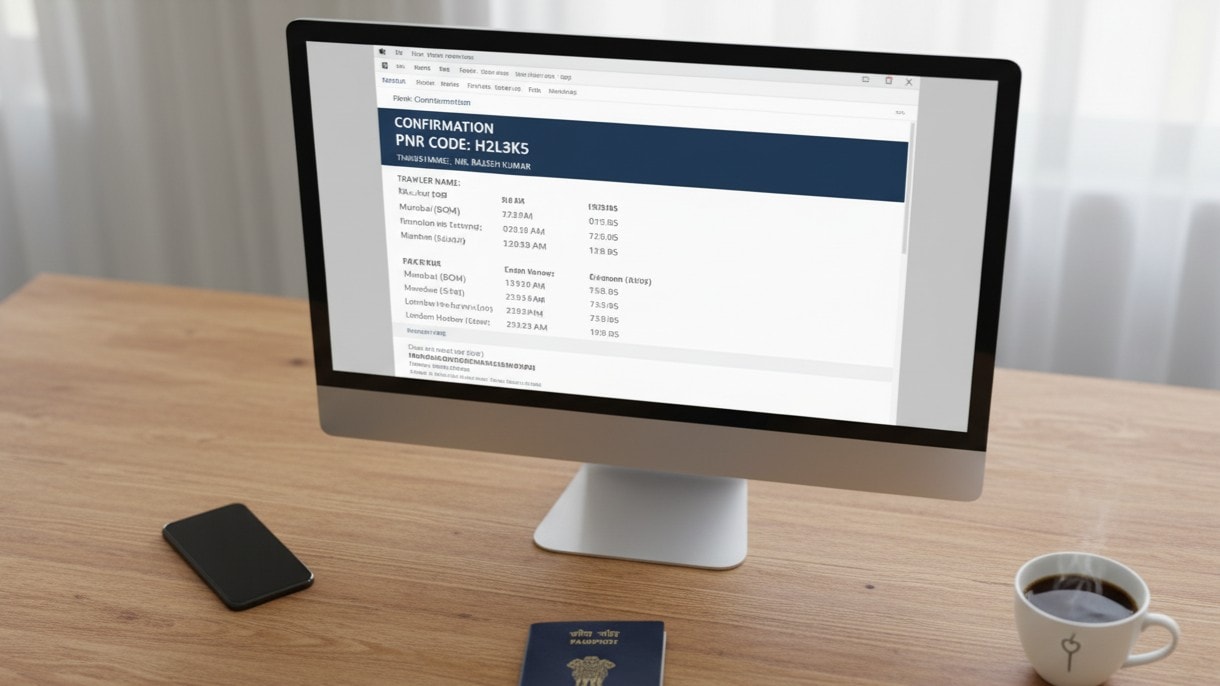
Embassy Rules, Hidden Nuances, And Little Traps Indian Applicants Should Know
Before you rush to book your dummy flight or lock in that visa appointment, pause for a moment. Every country has its own visa quirks, and if you’re applying from India, you’ll soon realize that one size never fits all. What counts as a valid flight itinerary for a Schengen embassy might look completely different to the UK or Canada. Understanding these small but crucial differences saves you time, money, and a lot of stress later. Make your visa process easier—book dummy ticket online and download your flight reservation instantly.
Let’s walk through what actually matters for Indian applicants—the small details that separate smooth approvals from avoidable rejections.
One Size Doesn’t Fit All: How Visa Regions Treat Dummy Bookings Differently
You might think all embassies just want to see your flight plan, but that’s not entirely true. Each region views your itinerary through its own lens.
1. Schengen Countries (France, Germany, Italy, etc.) Schengen embassies are sticklers for structure. They expect a clear round-trip itinerary showing: For detailed Schengen guidelines, visit the official Schengen Visa Info site.
- Entry and exit from the Schengen zone.
- Internal flights or trains between countries if you’re visiting multiple cities.
- A travel route that matches your hotel stays and insurance dates.
They usually don’t need a paid ticket, but your dummy booking must look realistic. Dates should align perfectly with your stated trip length.
2. The United Kingdom The UK doesn’t insist on a paid flight ticket either, but they’re serious about credibility. Your itinerary should:
- Reflect your visa category (for example, students usually show one-way, tourists show round-trip).
- Match your university or business letter if applicable.
- Avoid showing unreasonably long stays that don’t fit your financial proof.
UK officers also pay attention to airport codes. Showing Heathrow for arrival and Manchester for departure is fine only if your trip plan explains it.
3. United States and Canada Both embassies accept dummy tickets, but they prefer straightforward routes. They know you won’t confirm travel until after visa approval, so focus on realism:
- US tourists and business visitors should show a clear round-trip.
- Students can show one-way or open-ended, depending on course start dates.
- Avoid routes with unnecessary layovers—these can look suspicious.
4. Asia-Pacific and Middle East (Singapore, Malaysia, Japan, UAE, etc.) Asian and Gulf embassies tend to be more procedural. Some—like Japan—expect exact flight timings, while others—like Singapore—only need travel dates.
- For short-term tourist visas, always show round-trip.
- For work or dependent visas, one-way bookings make sense.
- For Gulf countries, ensure your departure city in India matches your residence region, since regional quotas sometimes apply.
Knowing these nuances helps you tailor your dummy ticket correctly for each region, rather than recycling the same itinerary for every application.
When Round-Trip Looks Best And When One-Way Is The Smarter Choice
Visa officers don’t think like travel agents. They think in terms of credibility. Your flight booking should make sense given your purpose.
Round-trip dummy tickets are best for:
- Tourists: A defined arrival and return builds trust.
- Family visitors: Shows intent to go back.
- Short business trips or conferences: Confirms temporary purpose.
One-way bookings make sense when:
- You’re a student going for a long-term course.
- You’re moving abroad on a work permit or dependent visa.
- You’re applying for residency or migration (like PR or spouse visas).
If you’re in one of these categories, don’t panic about not having a return date. Just make sure your dummy booking matches your supporting papers—like your admission letter or employment contract. The key is logical consistency, not ticket type.
The “Plausibility Test” Every Indian Visa File Faces
Embassies in India apply what insiders call the plausibility test. In simple terms, they ask: Does this plan make sense?
Your flight itinerary must align with:
- The duration of your trip mentioned in your cover letter.
- The financial proof you’ve provided (funds should match trip length).
- Your hotel bookings or invitation letter.
- Your leave approval or college NOC if you’re employed or studying.
Here’s a quick example. If your bank balance shows ₹80,000, but your itinerary covers 25 days in Europe with multiple flights, that gap could raise eyebrows. The embassy might wonder how you’ll afford the trip.
It’s not just about having documents. It’s about how well your documents talk to each other.
Your dummy booking acts as the skeleton of your story. Everything else—insurance, funds, hotels—should attach logically to it.
Routes That Make Officers Raise Eyebrows
Certain flight routes look perfectly normal to travelers but suspicious to embassies. You need to know which ones to avoid.
Watch out for:
- Ultra-tight layovers under 90 minutes for Schengen or US transits.
- Multiple-country detours that don’t match your visa type (for example, Delhi–Istanbul–Paris–Rome–Zurich for a 5-day trip).
- Flights starting from another country—like showing departure from Dubai when your residence is in India.
- Mismatch between entry and hotel city, such as flying into Amsterdam but showing hotel bookings in Berlin only.
Embassy officers handle hundreds of files daily, and they’re trained to spot patterns. If your route looks illogical or forced, your application might face extra scrutiny.
A simple fix: stick to straightforward routes and ensure your dummy booking supports your story, not complicates it. Get a verified itinerary without paying full fare—start your dummy ticket booking in just a few clicks.
Timing Is Everything: Holidays, Festivals, And Peak Rush In India
Embassy timelines shift with India’s calendar. You might not realize it, but public holidays and peak travel seasons affect how fast your application moves—and whether your dummy booking stays valid long enough.
Here’s how to plan smartly:
- March–June (Summer Rush): Student and tourist visa peaks. Create your dummy booking closer to your appointment date to avoid expiry.
- October–December (Festivals & Winter Trips): Expect airline prices to rise fast. Generate your itinerary early to lock realistic dates.
- Public Holidays (Holi, Diwali, Eid, Christmas): Embassies often close for multiple days, especially Schengen and UK missions. Check calendars before scheduling.
Dummy bookings usually last only a few days, so you’ll need to refresh or reissue them if your appointment shifts during these periods. This is especially true at busy VFS centers in Delhi, Mumbai, and Chennai, where slots get pushed quickly.
The Hidden Geography Of Visa Jurisdictions In India
Most applicants don’t realize that where you live in India affects where you apply—and sometimes, even your processing speed.
Each embassy has consular jurisdictions. For example:
- Delhi covers the northern states.
- Mumbai handles western regions like Maharashtra, Gujarat, and Goa.
- Chennai manages the south.
- Kolkata deals with eastern states and the northeast.
If you apply at the wrong center, your file can get delayed or returned. That’s why your dummy booking should also make sense geographically.
For instance, if your address is in Bengaluru but your flight shows departure from Delhi, it could confuse officers. It’s not a rejection reason by itself, but it adds unnecessary questions.
When possible, depart from your local airport or clearly explain why you’re flying out from another city (for example, cheaper fare or family visit before departure).
Embassy officers aren’t trying to trick you. They just want to see logic and honesty in your application. As an Indian applicant, your goal is to create a complete and believable travel story.
That story starts with a flight itinerary that makes sense—right routes, right dates, right intent.
Remember:
- Match your ticket type to your visa type.
- Keep every supporting document consistent with your itinerary.
- Avoid overcomplicating routes.
- Be mindful of Indian holiday rush and embassy jurisdictions.
Do this, and your dummy flight booking becomes more than a document—it becomes a powerful proof that you’re a smart, prepared traveler who knows exactly what they’re doing.

Timelines That Actually Work: When You Should Create, Hold, Or Refresh A Dummy Booking in India
If there’s one part of the visa process that trips up even experienced travelers, it’s timing the dummy flight booking right. Make it too early, and your reservation expires before your appointment. Too late, and you end up scrambling to find a verifiable itinerary just hours before your biometric slot. The secret lies in balancing timing, accuracy, and flexibility—especially with how Indian embassies, airlines, and visa centers operate.
Let’s break down a practical timeline that works for Indian applicants in 2025.
The Countdown Formula: Working Backward From Your Appointment
The easiest way to plan your dummy booking is to start from your visa submission or biometric date and count backward. That date is your anchor.
Here’s a simple step-by-step:
- Visa appointment date confirmed: That’s when your documents must look fresh and verifiable.
- Five to seven days before that: Create or order your dummy flight booking. This ensures the PNR remains active for the appointment.
- Three to four days before: Double-check that your PNR still shows up on the airline’s website. Refresh if necessary.
- Two days before: Print your itinerary and verify your hotel and insurance dates match.
- Appointment day: Carry a hard copy and a screenshot of your verified PNR in case the officer asks.
This backward planning approach ensures your dummy booking looks current, fits your supporting documents, and doesn’t expire mid-process.
A pro tip: Avoid creating your itinerary more than 10 days before submission unless your agent provides a refresh guarantee. Airline systems automatically cancel unpaid reservations after a set period, and expired PNRs look suspicious in embassy systems.
Ideal Lead Times For Different Visa Categories
Each visa type demands its own rhythm. A tourist applying for Europe isn’t on the same schedule as a student leaving for Canada or a parent visiting family in the UK.
Here’s a practical guide for Indian applicants:
- Tourist Visas: Create your dummy booking 5–7 days before your appointment. Refresh if your slot gets rescheduled. Schengen and UK centers often cross-check itineraries, so having a valid PNR matters more than early planning.
- Business Visas: Make the reservation 7–10 days before submission. Ensure it aligns with your invitation letter or event dates. Business itineraries should look professional—no weekend gaps unless clearly explained.
- Student Visas: Since course start dates are fixed, you can create the booking 10–15 days before your file submission. One-way is fine, but confirm your destination city matches your university letter.
- Medical Visas: These are time-sensitive. Ideally, make your dummy booking 2–3 days before submission, close to your hospital appointment or medical correspondence date.
- Family Visit Visas: Plan 7–10 days before submission, especially if your host has fixed vacation or invitation dates.
Remember, embassies care more about consistency than early reservations. A dummy booking that matches your documents is far stronger than one created weeks in advance but already expired.
How Long A Dummy Flight Reservation Actually Stays Alive
One of the biggest myths among Indian travelers is that a dummy booking stays valid until you cancel it. That’s rarely true. Each airline and system has its own rule.
Here’s how most work:
- Direct Airline Holds: Usually valid for 24–48 hours. After that, the system auto-cancels if unpaid.
- Travel Agency or GDS PNRs: These can last 3–7 days, depending on the agency’s IATA settings.
- Online Travel Portals (OTAs): Most display the itinerary immediately but may not hold a real seat. Always verify the PNR on the airline website.
If your PNR lapses before your appointment, don’t panic. Simply request a refresh or recreate a new dummy booking with the same travel details. Then, attach a brief note in your cover letter explaining the update. Embassies understand that reservations can expire—it’s the consistency and honesty that count.
Refresh Like A Pro (Without Raising Eyebrows)
There’s a right and wrong way to refresh a dummy booking. Refreshing doesn’t mean completely changing your flight path or travel story—it means extending the life of your existing plan.
Here’s how to refresh safely:
- Keep the same destinations and near-identical timings.
- Slightly adjust dates only if your appointment shifted.
- Update hotel and insurance dates to match your refreshed itinerary.
- Save a new PDF and label it “Updated Flight Itinerary – [Date]” for clarity.
If your appointment delay was out of your control, mention it briefly in your cover letter. Something as simple as: “Appointment rescheduled by VFS; updated flight itinerary attached accordingly.”
That line instantly clears any confusion and prevents your application from being flagged for inconsistency.
Syncing With Real-Life Schedules In India
Your visa timeline doesn’t exist in a vacuum. You’ve got work leave to manage, university exams to finish, and family events to juggle. Smart travelers align everything early so the paperwork tells one cohesive story.
If you’re employed:
- Match your dummy booking dates with your company leave letter.
- Avoid showing travel that overlaps with critical work events.
- Make sure HR approval dates line up with your itinerary submission.
If you’re a student:
- Coordinate your dummy booking with your NOC (No Objection Certificate) or semester break.
- Don’t show departure before your final exam dates—it makes your story less believable.
If you’re a freelancer or digital nomad:
- Mention flexible work arrangements in your cover letter.
- Keep your dummy booking realistic—avoid open-ended travel unless applying for long-term visas.
The goal is harmony. Your documents should look like they were planned by one person with a clear head—not pieced together at the last minute.
The India Reality Check: Peak Seasons And Holiday Chaos
Timing your dummy booking around India’s travel calendar is just as important as matching embassy deadlines. Airline inventory and visa center traffic both spike during specific months.
Here’s a snapshot to plan smarter:
- Summer (April–June): Student and tourist traffic soars. Dummy bookings expire faster due to high demand. Get them issued close to your appointment date.
- Monsoon (July–September): Easier slot availability, but frequent flight changes. Double-check PNR validity if you’re rescheduling.
- Festival Season (October–December): Expect long embassy holidays and packed flights. Build an extra week into your planning.
- Winter Break (December–January): Airfares jump. Dummy bookings made too early might not reflect real availability later.
Avoid getting tempted by “flash sale” flight deals. They often disappear within hours, leaving your itinerary outdated. Dummy bookings should be stable and realistic—not dependent on volatile airline promotions.
Timing Is Strategy
Getting your visa-approved dummy booking right isn’t luck—it’s timing and precision. You don’t need to overthink it; you just need to plan backward from your appointment, keep your documents aligned, and refresh when required.
Think of your dummy booking as a living document. It breathes, changes, and adapts to your timeline. As long as you stay organized, your itinerary will look solid, your file will stay consistent, and your confidence will shine through when you hand over those papers at the visa counter.
Plan smart, refresh wisely, and your dummy booking will do exactly what it’s meant to—get your visa approved without unnecessary stress.
Proof That Stands Up: How To Make Your Flight Itinerary Verifiable And Embassy-Friendly
There’s a big difference between a document that looks like a flight booking and one that actually stands up to embassy checks. Visa officers in India handle hundreds of applications a day, and they can tell in seconds whether your flight itinerary is real, consistent, and believable. The good news? You don’t need insider connections or expensive tickets—just the ability to think like an officer and double-check every detail before you submit.
Let’s go step by step through how to make sure your dummy booking isn’t just convincing—it’s bulletproof.
The Quick Reality Check: Can Your Itinerary Survive Verification?
A dummy ticket is only as strong as its PNR—the Passenger Name Record. That six-character code is what embassies use to verify your reservation. If your PNR doesn’t open on the airline’s website or shows “not found,” your booking won’t stand up to scrutiny.
Here’s your personal verification checklist before submission:
- PNR Status: Make sure your booking is “on hold” or “pending ticketing.” If it’s expired, refresh it.
- Airline Visibility: Check your PNR directly on the airline’s website under “Manage Booking.” It should display your name, route, and travel dates.
- Correct Passenger Name: Must match your passport exactly—no missing middle names or spelling errors.
- Accurate Travel Dates: These must align with your hotel bookings, travel insurance, and leave letters.
- Logical Routing: The itinerary should make sense geographically. Delhi–Paris–Rome–Delhi looks realistic; Delhi–Doha–Rome–Zurich–Mumbai for a 5-day trip does not.
- Consistent Contact Details: Use the same phone number and email across all documents.
If every box here ticks green, your flight itinerary will already pass the first layer of embassy review.
Who Made Your Booking Matters: Airline, OTA, Or Consolidator?
Not all dummy tickets are equal. The source of your reservation determines how embassies view its credibility. Let’s break it down.
1. Airline-Generated Reservations These are the gold standard. When you reserve directly on an airline’s website or call center, your PNR sits in the airline’s system instantly. Embassies can verify it easily. The only downside? Most airlines only hold seats for 24–48 hours, so the window is short.
2. Online Travel Agencies (OTAs) Websites like MakeMyTrip, Yatra, or Expedia sometimes provide verifiable itineraries through their booking engines. But not all do. Some show “booking requests” instead of real reservations. Always verify your PNR on the airline site, not just the OTA confirmation page.
3. Travel Consolidators Or IATA Agents These are licensed intermediaries using Global Distribution Systems (GDS) like Amadeus or Sabre. Their dummy bookings often last longer (up to 7 days) and are widely accepted by embassies. Consular staff are used to seeing these formats, which resemble genuine tickets minus the payment record.
In short, if your itinerary originates from a legitimate airline or GDS, it’s embassy-friendly. If it’s from an unverified seller with no visible PNR, you’re taking a risk.
How Visa Officers “Read” Your Reservation
Once your file reaches the embassy, the officer has limited time—often less than two minutes—to scan your entire set of documents. They don’t overanalyze; they scan for logic and consistency.
Here’s what they look for:
- Travel Dates – Do they match the duration mentioned in your form and cover letter?
- Entry and Exit Points – Are they consistent with your hotel and insurance?
- Transit Logic – Is there enough time for layovers, and do transits align with visa validity?
- Return Evidence – Is there a clear flight back to India, or at least a forward route to another country if one-way?
- Applicant Profile Fit – For example, a student traveling to a university city or a businessperson to a conference location.
If any of these pieces don’t align, the officer doesn’t always reject on the spot—but they may ask for clarification or documentation, which delays processing.
The goal is to make your itinerary so clean that the officer doesn’t need to ask a single question about it.
Multi-City Itineraries And The Schengen Logic
If you’re applying for a Schengen visa from India, you probably plan to visit more than one country. That’s great—but only if your itinerary tells a clear story.
Here’s how to make multi-city bookings work:
- Follow the Embassy Rule: Apply to the country where you’ll spend the most nights.
- Align Hotels With Flight Segments: If you show flights to Paris, Rome, and Zurich, your hotel bookings should reflect those cities.
- Plan Your Order Logically: Don’t jump back and forth across Europe. Straight routes look realistic; zigzags look fake.
- Include Intra-Schengen Transport: If one leg is by train, mention that in your cover letter.
A clean Schengen itinerary might look like this: Delhi → Paris (3 nights) → Rome (4 nights) → Zurich (2 nights) → Delhi.
Simple, believable, and supported by hotel and insurance documents. That’s what “embassy-friendly” really means.
When One-Way Tickets Are Perfectly Fine (And When They’re Not)
For long-stay categories like student, work, or dependent visas, a one-way dummy booking is not just acceptable—it’s expected. Embassies understand you can’t fix a return date months or years in advance.
Here’s how to handle it:
- Show a one-way ticket to your destination city that matches your joining date.
- Mention your plan to return after completing your course or contract in your cover letter.
- If possible, include an onward travel plan or tentative return estimate in your explanation.
This approach looks honest and organized, which always impresses visa officers.
Avoid creating a fake return flight “just to look complete.” Officers know when a routing feels unrealistic, and it can hurt your credibility.
Making It Easy For Parents And First-Time Travelers
Not everyone applying for a visa is tech-savvy. Many Indian parents, senior citizens, and first-time travelers rely on printed documents. If that’s you—or you’re applying on their behalf—keep things simple and verifiable.
Here’s what helps:
- Print the confirmation email showing your PNR clearly at the top.
- Include the airline “Manage Booking” page with visible dates and status.
- Highlight the applicant’s name and booking code for quick reference.
- Carry a digital copy on your phone in case staff want to cross-check.
If an officer asks you to verify the booking at the visa center, you can open the airline site, enter the PNR, and show the result in real time. That small step shows confidence and authenticity.
Little Details That Make A Big Difference
A few subtle touches can make your dummy booking look professional and trustworthy:
- Use clean formatting—avoid extra logos or cluttered PDFs.
- Check that airport codes match the actual cities (CDG for Paris, FCO for Rome).
- Avoid using “random” times like 2:37 AM departures that look auto-generated.
- If your name has a common Indian variation (like Kumar/Kumaar), ensure it matches your passport exactly.
Visa officers notice precision. Small things like consistent fonts and dates subconsciously signal that your file is genuine.
Real Proof Is Verifiable Proof
A dummy flight booking isn’t about tricking the system—it’s about showing preparedness. Embassies aren’t trying to trap you; they just want to see a reservation that’s genuine, traceable, and logical.
If your PNR works, your dates line up, and your story adds up, you’ve already cleared the hardest part. Think of your itinerary as the backbone of your application—it supports everything else.
So before you print that ticket, run through this checklist one last time. Make sure it reads like a true traveler’s plan, not just a piece of paper. Because when your dummy booking is verifiable, your visa file stops being a gamble—and starts looking like a sure thing.
Risks, Scams, and Red Flags Visa Applicants in India Must Avoid
Let’s be real—dummy flight bookings can either be your visa file’s best friend or its biggest mistake. For every genuine itinerary made through a trusted source, there are dozens of fake tickets floating around the internet. Many look convincing on screen but crumble the moment an embassy officer checks the PNR.
If you’re serious about your visa, you can’t afford to play guessing games. Here’s everything you need to know about spotting red flags, steering clear of scams, and fixing issues if you’ve already been caught in one. Need embassy-approved documents fast? Book dummy ticket and receive your confirmation right away.
👉 Order your dummy ticket today to avoid these pitfalls entirely.
“Fake Tickets” vs. Legit Reservations: Know The Difference
It’s shockingly easy to get fooled online. You might see websites offering “visa flight bookings” for ₹200 or less, promising same-day delivery. But here’s the catch—most of these aren’t real reservations at all.
Fake tickets usually have these telltale signs:
- The PNR (Passenger Name Record) doesn’t exist on the airline’s website.
- The airline code or flight number is outdated or doesn’t match real schedules.
- The layout looks inconsistent—wrong fonts, missing headers, or mismatched logos.
- When you enter your PNR on “Manage Booking,” it says Record not found.
Legit reservations, on the other hand, always have:
- A valid PNR created in an airline or GDS (Global Distribution System).
- Consistent details—your name, route, and travel dates align with your other documents.
- A realistic layout that mirrors genuine e-tickets, minus the “Ticketed” status.
Embassies in India often verify PNRs manually or through backend systems. If they find yours doesn’t exist, the file gets flagged instantly. And that one small fake PDF can cast doubt over your entire application, even if everything else is genuine.
Too-Cheap To Be True: Why Bargain Deals Are A Trap
Let’s be honest—every Indian traveler loves a good deal. But when it comes to dummy bookings, too cheap is too dangerous.
Many ultra-low-cost websites reuse the same templates and randomly generate fake flight numbers. Some even copy real passenger data from past users and recycle it to create “dummy” documents.
Here’s what usually happens behind the scenes:
- No Real Booking: You pay ₹100–₹300 for a PDF that looks real but doesn’t exist in any airline system.
- Recycled PNRs: The seller reuses an expired reservation from another customer.
- Identity Leakage: Your personal details are stored insecurely and sometimes sold to data brokers.
The truth is, creating a legitimate, verifiable dummy ticket takes access to an airline’s GDS platform and compliance with IATA rules. That costs time and skill. So, when someone offers “instant tickets for ₹199,” understand that you’re paying for a file—not a flight.
If your budget is tight, it’s still smarter to use a trusted, embassy-approved service. A few hundred extra rupees is worth the peace of mind.
The Dark Side Of PNR Recycling: Hidden Identity Risks
Reused or “recycled” PNRs are one of the most common scams affecting Indian visa applicants today. Sellers take an old, expired reservation and replace your name and details on top of it using PDF editing tools. It looks real at first glance, but it’s a ticking time bomb.
Here’s why it’s risky:
- The PNR is linked to another traveler. When the embassy checks, the name mismatch exposes the fraud.
- Your data can be misused. Scammers often store your passport number and date of birth for future use.
- Airlines track suspicious activity. Multiple fake reservations under one locator can flag accounts.
Never send your passport details to an unverified agent or WhatsApp number. Use secure payment portals and legitimate providers with customer support. In the long run, protecting your data is worth far more than saving a few bucks.
The Danger Of Manipulated PDFs: Why Embassies Catch Them Instantly
You might think a small date tweak or logo copy won’t be noticed. But embassies catch PDF edits faster than you’d imagine.
Modern visa systems use metadata analysis—they check the file’s digital footprint, including creation time, edit history, and document source. If your PDF shows “created using Adobe Acrobat Pro” five minutes before submission, that’s a red flag.
Other signs that give away manipulated bookings:
- Font inconsistencies between headers and body text.
- Routing anomalies (e.g., wrong airport codes).
- Date conflicts with hotel or insurance proofs.
Officers don’t need fancy tools—they just cross-check your PNR. If it doesn’t appear in the airline’s system, your credibility drops to zero.
The takeaway is simple: never edit or “fix” a booking manually. Always refresh it properly through a legitimate agent or airline.
Refundable Tickets: Smart Strategy Or Waste Of Money?
Refundable tickets can sound like the perfect workaround—you buy a real ticket, show it to the embassy, and then cancel it once your visa is approved. But in practice, it’s not always ideal for Indian applicants.
Pros:
- 100% verifiable and risk-free.
- You can show proof of payment if needed.
Cons:
- They’re expensive—often 2x or 3x the normal fare.
- Refunds on Indian credit cards or UPI take 7–21 days.
- Airlines sometimes charge high cancellation fees or partial refunds only.
For short-term visas, refundable tickets can drain your cash flow for weeks. A smarter alternative is to use a professional dummy booking service that offers verifiable PNRs and refresh support. You save money while keeping your file 100% compliant.
Already Submitted A Bad Itinerary? Here’s How To Fix It
If you suspect you’ve accidentally submitted a non-verifiable or fake-looking itinerary, don’t panic. You still have options.
Step 1: Verify Your PNR Go to the airline’s website and check if your reservation exists. If not, create a new verifiable booking immediately.
Step 2: Prepare A Correction Letter Write a short note for your embassy or VFS submission team. Keep it simple and honest: “I have updated my flight itinerary as the previous one was no longer active in the airline system. Please find the revised version attached.”
Step 3: Submit A Fresh Copy If your file hasn’t yet reached the embassy, VFS may allow you to submit the corrected itinerary. If it’s already under review, email the embassy’s visa section with your application reference.
Step 4: Learn And Move On You’re not alone—many Indian travelers make this mistake. What matters is how quickly and transparently you fix it.
Common Sense Beats Shortcuts Every Time
Visa officers aren’t looking for perfection—they’re looking for honesty and consistency. Fake PDFs, recycled PNRs, and dirt-cheap offers might save you time today but can cost you a visa tomorrow.
If your goal is to travel confidently and stress-free, always choose sources that generate verifiable reservations through legitimate systems.
You’ve worked too hard to let one fake booking undo your entire application. So be smart, be careful, and treat your dummy ticket like what it really is—proof of intent, not a loophole. Strengthen your visa application with a real, verifiable reservation—book dummy ticket now.
Get Our Genuine, Embassy-Approved Dummy Ticket in India
If you’ve been searching for a reliable way to get a dummy air ticket or dummy hotel booking without paying for a full airline ticket upfront, you’re in the right place. At DummyFlights.com, we specialize in creating embassy-recognized reservations that make your visa application process smooth and stress-free. Whether it’s a Schengen state, the UK, the US, or Asia, our documents are built to meet every consulate’s expectations for visa application purposes.
Our platform helps travelers who need a verifiable flight reservation, booked flight itinerary, or ticket for visa that’s instantly usable and fully compliant. We make it possible for you to present your travel intentions clearly and confidently.
Why Our Dummy Ticket Service Is Embassy-Friendly
Our goal is to help you submit documents that embassies trust. We create each reservation using real airline systems, ensuring every itinerary is traceable and authentic.
Every booking comes with:
- A genuine pnr code that works directly on the airline’s website.
- Accurate passenger and onward ticket details matching your passport.
- Logical routes and timing, including realistic departure time and destinations.
- A flight confirmation that looks just like an actual ticket, minus the payment.
Because many embassies only ask for proof of intent to travel, not an original air ticket, our service provides the ideal solution. Your documents remain valid throughout the visa review period, making them fully embassy-compliant.
Designed For Visa Applicants Across India
We built DummyFlights.com to help Indian travelers who need reliable verifiable flight and hotel reservations on short notice.
Here’s what you can expect from us:
- Instant download: Receive your dummy flight ticket or hotel reservation the moment you complete payment.
- Applies to every destination: Our system works for all regions, from the Schengen area to North America and Asia.
- Tailored itineraries: We customize each reservation to your desired date, travel route, and visa type.
- Recognized by consulates: Our documents follow the same format that embassies require, ensuring easy acceptance.
We know how consulates in India verify reservations, so we design each document to look consistent, verifiable, and professional.
Transparent Deliverables: You Get What You See
When you order with us, you’ll know exactly what you’re getting. No surprises—just a verifiable flight reservation that works every time.
Here’s what’s included:
- A clean PDF itinerary with your route, name, and e ticket number.
- A flight confirmation that displays correctly on the airline’s portal.
- An instantly downloadable document you can print or attach to your visa file.
We even display sample itineraries on our website so you can preview what your booked flight itinerary will look like before you place an order. Everything we provide mirrors the format consulates expect to see in a booking form or travel proof.
How To Order In Just A Few Minutes
The booking process on DummyFlights.com is built for speed and simplicity. You don’t need travel experience—just follow these steps:
- Search and fill out your travel details, including names and travel dates.
- Select your preferred option for a flight or hotel.
- Confirm and pay using any secure online method.
- Download instantly and print your reservation for embassy submission.
You can complete the entire order in minutes—even if you’re already at the consulate or visa center. Each reservation works globally and can be verified using your unique PNR code.
Flexible Date Changes Without Extra Cost
Plans change. Appointments move. That’s why we allow unlimited desired date changes without extra fees.
If your visa application process gets delayed, we’ll simply refresh your itinerary for free. No need to repurchase or modify anything yourself. And since we understand how unpredictable embassy schedules can be, our team makes sure your verifiable flight reservation always stays active for as long as you need it.
Our support team is available to handle updates, reschedules, or quick edits—so you never have to worry about outdated documents.
Privacy, Accuracy, And Peace Of Mind
We know you’re sharing personal details, and protecting that information is our top priority. Your data is used only to create your booking, not stored or shared.
We ensure every itinerary includes:
- Perfectly matched spellings from your passport.
- Consistency with forms like DS-160 or Schengen applications.
- Document formatting that reflects your travel intentions accurately.
We also double-check all air ticket booking details—routes, departure time, and names—to guarantee that your documents stay consistent across every part of your file.
A Solution For Every Traveler Type
We’re proud to serve every kind of traveler applying from India.
Tourists: Get realistic round-trip air ticket and hotel reservations without spending on non-refundable tickets.
Students: Receive one-way bookings that align with your admission dates—perfect for first-time travel from your home country.
Business Travelers: Submit professional itineraries that match meeting schedules and embassy requirements.
Family Visitors: Show strong proof of travel and return intent through clean, logical verifiable flight reservations.
Medical or Emergency Travelers: Need instant paperwork while you’re already at the embassy? We’ll provide dummy tickets that are ready within minutes.
Every service is formatted to match what many embassies expect—a complete, believable snapshot of your travel plan.
Why Indian Travelers Trust DummyFlights.com
Thousands of Indian applicants rely on our platform for one simple reason—it works.
We understand how frustrating it is to risk a visa refusal over a poorly made document. That’s why our reservations are built to appear genuine, logical, and completely embassy-friendly.
Here’s what sets us apart:
- Every dummy hotel booking or flight reservation is verifiable
- You’ll never deal with fake or reused itineraries.
- Each document includes a real pnr code and authentic flight data.
- Our support team is available to guide you at every step.
With DummyFlights.com, you’ll never need to risk booking an actual ticket before visa approval again.
Our Promise To Every Indian Applicant
At DummyFlights.com, our mission is simple—to make your visa application process faster, safer, and stress-free.
We’re committed to delivering verifiable flight and hotel bookings that match embassy standards worldwide. So, whether you’re traveling to a Schengen state or beyond, our service gives you the same reliable documentation trusted by travelers everywhere.
When you’re ready to apply, skip the guesswork. Choose DummyFlights.com—the smarter way to secure your ticket for visa without paying for an original air ticket too soon.
Build a Credible File: Align Your Dummy Booking With Hotels, Insurance, and Funds Proof
A dummy booking alone won’t get your visa approved—it has to fit neatly with every other document you submit. Visa officers don’t just look at each file in isolation; they connect the dots between your flights, hotels, funds, and insurance. If one detail looks out of sync, it can create doubt. And in visa review, doubt is never your friend.
Let’s talk about how to make your documents tell one consistent, believable story that convinces any embassy that your travel plans are genuine and well-thought-out.
Make Your Story Add Up
Your application is more than a set of forms—it’s a story about your travel intentions. Every date, city, and cost needs to work together logically.
Here’s how to check for consistency:
- Dates: Your flight departure and return must fall exactly between your hotel booking and travel insurance dates.
- Cities: The cities in your dummy flight itinerary should match the hotels you’ve reserved. If your ticket shows Mumbai to Rome, your hotel shouldn’t be in Paris unless you’ve clearly explained a multi-city plan.
- Budget: Your bank statements should show enough funds to cover your total trip duration, including tickets, accommodation, and daily expenses.
For example, if you’ve booked 10 nights in Italy but your funds barely cover three days, your story won’t add up. The embassy isn’t judging your wealth—they just need to see that your plan makes financial sense.
Think of your file as one big puzzle. Each piece—flights, hotels, insurance, and funds—has to lock perfectly into place.
Hotels First or Flights First?
Every applicant faces this question: should you book hotels first or flights first? There’s no universal rule, but here’s what works best for Indian travelers.
Booking Flights First: A dummy flight booking gives your trip a backbone. Once you know your travel dates, you can match your hotel and insurance around them. It’s easier to build everything else around fixed flights.
Booking Hotels First: If your trip revolves around specific events or a friend’s invitation, start with the hotel. For instance, if you’re visiting a conference or wedding with fixed dates, your accommodation determines your flight plan.
Avoid Cancellation Traps: Don’t rush to pay for non-refundable hotels or airline tickets before your visa arrives. Embassies explicitly warn against this. Use refundable options or dummy hotel reservations instead.
The smart approach? Get a dummy flight first, use that to align your hotel bookings, and make sure both match your insurance. This sequence minimizes the chance of conflicting details.
Travel Insurance That Matches Your Dates
Travel insurance is often overlooked, but it’s a major part of a strong file. Embassies check that your insurance covers the full travel period—sometimes even a few days before and after your stay.
Here’s what different regions expect:
- Schengen Countries: Minimum coverage of €30,000 for medical expenses. The insurance must start from the day you leave India and end the day you return.
- United States and Canada: Flexible on coverage amount but focus on the policy period. The validity must match your flight and hotel dates exactly.
- Asia and the Middle East: Usually require proof of coverage for the entire trip duration; cost and provider don’t matter as much as the active coverage period.
Common Mistake: Applicants sometimes buy insurance for the wrong dates. For example, the insurance starts a day after the flight or ends a day before return. These tiny mismatches signal carelessness.
To avoid that, always double-check that your insurance period begins on your flight departure date and ends the day you land back in India.
Funds, Salary Accounts, and Indian Bank Statements
Money proof is where most Indian applications stumble—not because travelers lack funds, but because they present them poorly.
Visa officers look for two main things: liquidity and consistency.
- Liquidity: Show funds that are actually accessible—savings, salary, or fixed deposits that can be withdrawn. Avoid relying on assets like property or gold; they don’t count as travel-ready money.
- Consistency: Officers prefer to see steady income over sudden big deposits. A last-minute ₹3 lakh transfer looks suspicious, even if genuine.
Here’s how to make your finances look clean and logical:
- Submit the past three to six months of bank statements.
- Ensure the statement matches the name on your visa application and flight bookings.
- Include your salary account if you’re employed.
- Add a short explanation letter if you received any large amount recently (for example, a bonus or loan repayment).
Also, link your budget to your trip length. A week-long European trip with ₹1.5 lakh in savings looks fine; a month-long stay with the same balance doesn’t.
Family Files and Group Logic
If you’re applying as a couple or a family, your files must look coordinated. Visa officers often review family applications side by side, so consistency matters more than ever.
Here’s how to manage group logic smoothly:
- Same PNR vs. Separate PNR: Families can appear on one PNR for dummy flight bookings if they’re traveling together. Separate PNRs are fine if travel dates vary slightly.
- Hotel Bookings: Keep the same accommodation details across all files, unless you’re visiting relatives or staying separately for a reason.
- Funds: If one member sponsors others, include a sponsorship letter and proof of relationship (marriage or birth certificate).
- Cover Letters: Mention all accompanying travelers and explain the travel plan as one story.
For large groups, avoid overlapping or mismatched itineraries. Everything—from your flights to your hotel stay—should read as one cohesive plan.
Cover Letter Templates With Realistic Routing
Your cover letter ties everything together. It’s where you show the officer that your itinerary isn’t random—it’s intentional and well-organized.
Keep it short, clear, and practical. Here’s a simple structure that works well for Indian travelers:
Subject: Visa Application for [Your Name] – Travel to [Destination Country]
I am applying for a [Tourist/Business/Student] visa to visit [Destination Country] from [Start Date] to [End Date]. My travel plan includes visiting [City 1], [City 2], and [City 3], with accommodations booked at [Hotel Name]. I have attached my flight booking, hotel reservations, travel insurance, and proof of funds as required.
I intend to return to India after my trip as indicated in my return itinerary.
Avoid overloading your letter with clichés like “lifelong dream” or “once-in-a-lifetime opportunity.” Visa officers value clarity, not poetry.
A dummy flight booking only works when it fits within a complete, credible visa file. When your itinerary, hotels, insurance, and finances all tell the same story, your application feels authentic.
Remember this checklist before you submit:
- Dates match across all documents.
- Funds are steady and logical.
- Insurance covers the full trip.
- Hotels and flights align perfectly.
- The cover letter ties it all together.
When your documents speak the same language, your visa officer won’t have to second-guess your plan. That’s what makes your file not just complete—but convincing. Stay stress-free while applying for your visa—complete your dummy ticket booking safely and instantly.
More Resources
Dummy Flight Booking for Visa: The Smart Way to Secure Your Travel Plans
A dummy flight booking isn’t just paperwork—it’s your safety net during the visa process. It lets you prove intent without risking real money on tickets you might never use. When combined with proper hotel reservations, insurance, and funds proof, it builds a strong, trustworthy visa file. The key is consistency: every date, city, and document should align perfectly.
Whether you’re a student, tourist, or family traveler, planning smartly makes all the difference. Use genuine, verifiable reservations and keep your story simple, clear, and realistic. That’s the winning formula embassies look for—and the reason thousands of Indian applicants secure visas confidently every year using accurate dummy flight bookings. Secure your travel proof today—book dummy ticket trusted by thousands of Indian applicants.
What Travelers Are Saying
Related Guides
About the Author
Visa Expert Team - With over 10 years of combined experience in travel documentation and visa assistance, our team at DummyFlights.com specializes in creating verifiable travel itineraries. We’ve helped thousands of travelers navigate visa processes across 50+ countries, ensuring compliance with embassy standards.
Trusted Sources
- U.S. Department of State - Visa Information
- Schengen Visa Information
- International Air Transport Association (IATA)
Important Disclaimer
While our dummy tickets with live PNRs are designed to meet common embassy requirements, acceptance is not guaranteed and varies by consulate or country. Always verify specific visa documentation rules with the relevant embassy or official government website before submission. DummyFlights.com is not liable for visa rejections or any legal issues arising from improper use of our services.


